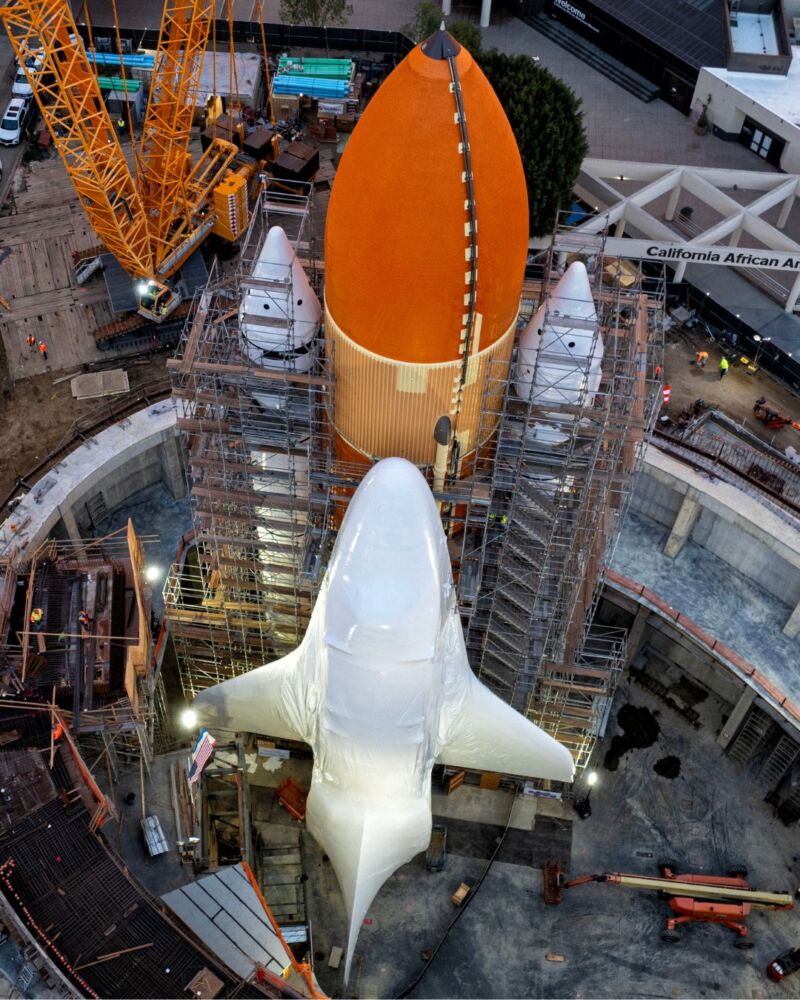Rocket Report: SpaceX at the service of a rival; Endeavour goes vertical

Enlarge / Space shuttle Endeavour, seen here in protective wrapping, was mounted on an external tank and inert solid rocket boosters at the California Science Center. (credit: California Science Center)
Welcome to Edition 6.29 of the Rocket Report! Right now, SpaceX's Falcon 9 rocket is the only US launch vehicle offering crew or cargo service to the International Space Station. The previous version of Northrop Grumman's Antares rocket retired last year, forcing that company to sign a contract with SpaceX to launch its Cygnus supply ships to the ISS. And we're still waiting on United Launch Alliance's Atlas V (no fault of ULA) to begin launching astronauts on Boeing's Starliner crew capsule to the ISS. Basically, it's SpaceX or bust. It's a good thing that the Falcon 9 has proven to be the most reliable rocket in history.
As always, we welcome reader submissions, and if you don't want to miss an issue, please subscribe using the box below (the form will not appear on AMP-enabled versions of the site). Each report will include information on small-, medium-, and heavy-lift rockets, as well as a quick look ahead at the next three launches on the calendar.

Virgin Galactic flies four passengers to the edge of space.Virgin Galactic conducted its first suborbital mission of 2024 on January 26 as the company prepares to end flights of its current spaceplane, Space News reports. The flight, called Galactic 06 by Virgin Galactic, carried four customers for the first time, along with its two pilots, on a suborbital hop over New Mexico aboard the VSS Unity rocket plane. Previous commercial flights had three customers on board, along with a Virgin Galactic astronaut trainer. The customers, which Virgin Galactic didn't identify until after the flight, held US, Ukrainian, and Austrian citizenship.